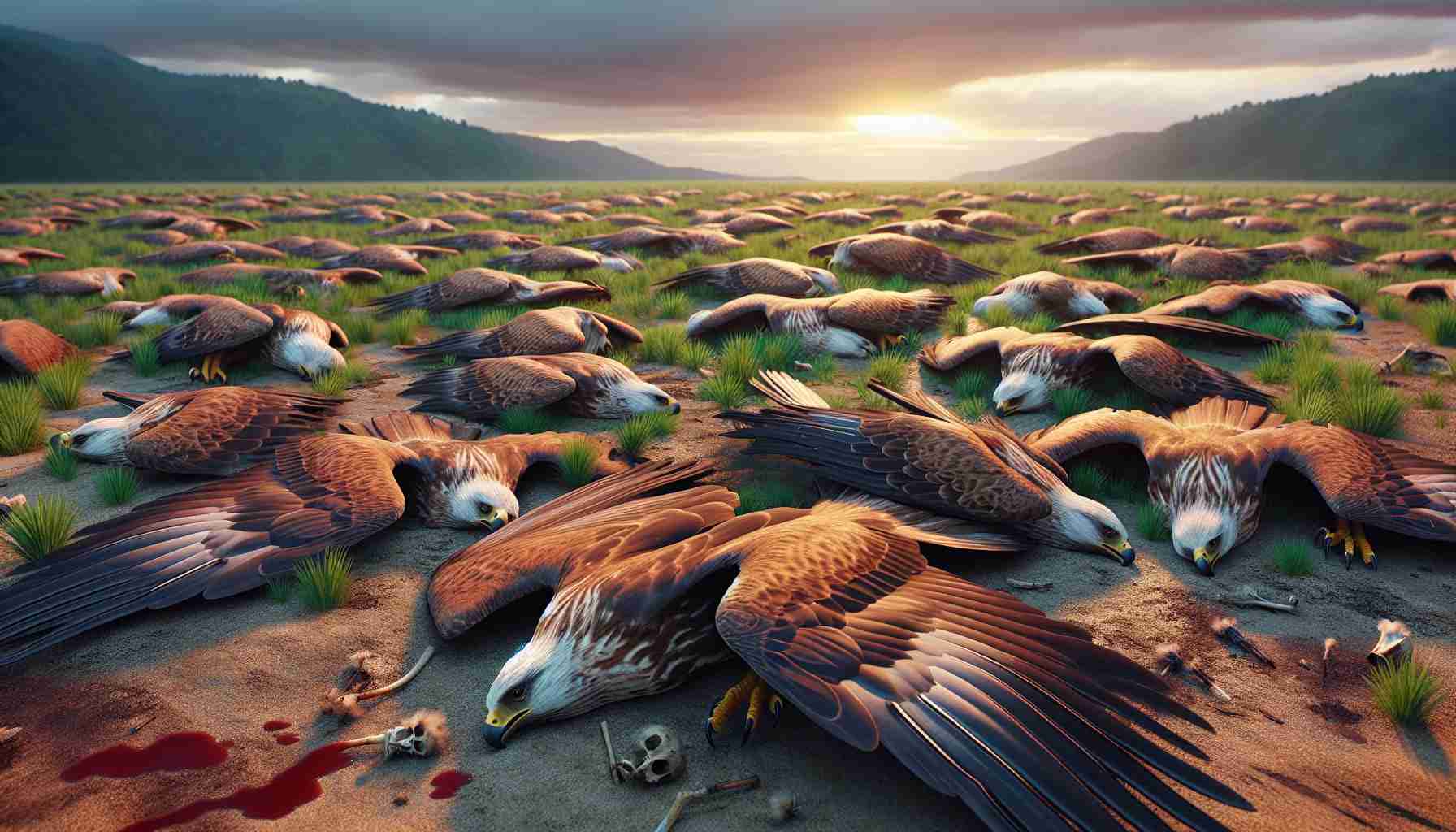- 335 birds, including Greater Spotted Eagles and Black Kites, died due to suspected poisoning from a contaminated water source.
- The tragic death of a Black Kite named X71 highlights the impact of this crisis on known individuals within species.
- Dror Halana emphasizes the urgent need for stricter pesticide regulations to combat wildlife poisoning.
- The cooperation between governmental bodies is crucial to mitigate these wildlife threats.
- These incidents may indicate a broader environmental issue that threatens bird populations.
- Raising awareness and promoting protective measures is vital for the conservation of wildlife for future generations.
In a shocking incident, the serene skies of the western Negev were tainted by tragedy as 335 magnificent birds met a grim fate. Among those lost were the majestic Greater Spotted Eagles, agile Black Kites, and unique Spur-Winged Lapwings. Inspectors from the Nature and Parks Authority revealed that the suspected poisoning originated from a contaminated water source, a silent killer lurking where these birds quenched their thirst.
One particularly notable victim, a Black Kite named X71, had been a familiar sight since 2017. This remarkable bird, a seasoned traveler, had journeyed thousands of kilometers between its nesting grounds and migration paths. Sadly, it succumbed to the toxic brew that claimed so many.
Dror Halana, the chief scientist at the Nature and Parks Authority, underscored the alarming need for stricter regulations regarding pesticide use. Without the vital collaboration from the General Directorate of Plant Protection and the Agriculture Ministry, he warned that the ongoing struggle against wildlife poisoning will only intensify. He expressed deep concern that these devastating incidents represent merely the “tip of the iceberg,” hinting at a broader environmental crisis.
This alarming episode serves as a wake-up call: stronger regulations and vigilant oversight are essential to safeguard Earth’s precious wildlife. The clock is ticking—if action isn’t taken, future generations might witness the decimation of even more bird populations. It’s a plea for awareness, underscoring that our environment must be protected, not just for wildlife, but for the legacy we leave behind.
Tragedy in the Skies: The Poisoning Crisis Threatening Bird Populations
An Overview of the Incident
In a heartbreaking event, the western Negev saw the loss of 335 birds due to suspected poisoning from a contaminated water source. Among the casualties were notable species such as the Greater Spotted Eagles, Black Kites, and Spur-Winged Lapwings. Black Kite X71, a well-known figure since 2017, was also among the victims, emphasizing the profound impact of this tragedy.
Relevant Information and Insights
– Market Forecasts: Environmental organizations are pushing for a market shift towards organic pesticides and sustainable agricultural practices, projecting significant growth in ecological farming sectors by 2030.
– Trends: There is a rising trend in public awareness about wildlife conservation, with more people advocating for stricter pesticide regulations, leading to increased pressure on governmental bodies.
– Limitations: Current regulations on pesticide use often lack enforcement and oversight, allowing harmful substances to infiltrate ecosystems.
– Predictions: Without immediate action, experts predict a continual decline in bird populations, with potential extinction rates for vulnerable species increasing significantly.
– Sustainability: The incident highlights the urgent need for sustainable farming practices that protect wildlife and maintain ecological balance.
– Innovations: New technologies in wildlife monitoring are being developed, including drones and AI, to track bird populations and assess the impacts of pesticides.
Key Questions
1. What steps can be taken to prevent wildlife poisoning in the future?
– Enhanced regulatory frameworks on pesticide use, increased collaboration between environmental agencies and agricultural sectors, and public awareness campaigns about the dangers of pesticide misuse are essential.
2. How does wildlife poisoning impact ecosystems?
– Wildlife poisoning disrupts food chains, decreases biodiversity, and can lead to population collapses for predator species, which may further exacerbate pest populations.
3. Are there alternatives to chemical pesticides that farmers can use?
– Yes, there are various organic and natural pest control methods, such as integrated pest management (IPM), biological control agents, and eco-friendly products designed to minimize harm to wildlife.
For further reading on environmental conservation efforts, visit Nature Conservancy.
